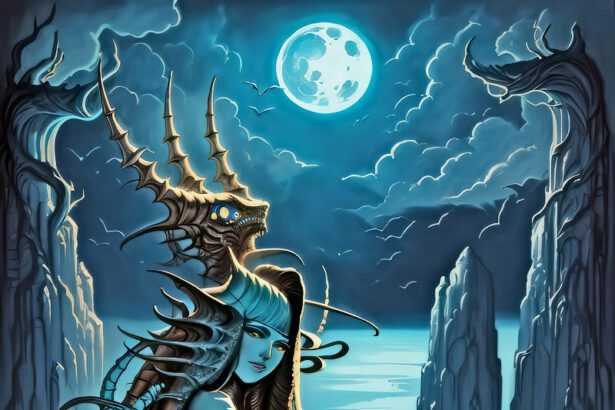In the ancient, time-space distorted folds of the 11th World of Zaa, the Traffic Helicon rises—not simply as a structure, but as a living conduit pulsing with alien intent. In this world where time is bent and space breathes with ancestral memory, no traveler arrives unshifted.
Here, in the shadow of Zaa’s most primal lands, the Helicon glows like a sentient monument—its spherical core throbbed with radiant blue and fire-orange hues, carved in labyrinthine sigils older than cognition. It doesn’t signal arrival. It demands recognition.
The surrounding sky churns in cosmic swells—violet tides, spectral pinks, nebulous blues—hinting at the infinite realms that feed into Zaa like emotional tributaries. Beneath this celestial storm, columnar structures loom like sentinels from forgotten civilizations, metal-born and solemn, marked by civilizations that never cared to be deciphered.
NoOmBlack’s oldest terrain breathes here. And through this sacred intersection, beings move—not just aliens in shape, but in origin, purpose, and pulse. Each traveler steps into the Helicon’s orbit with the weight of unspoken stories etched in their aura. Some drag the past behind them like flame-soaked cloaks. Others arrive future-first, tech-humming through the ether in search of sanctuary.
But what the Helicon offers is more than passage.
It is alignment.
A syncing of self with Zaa’s raw pulse.
A station between epochs, a landmark forged in mystery and lit by memory.
Here, the collision of ancient truth and technological rebellion shapes a mythic blur—where machines whisper in ancestor-tongue and archives breathe alongside circuitry. Zaa doesn’t simply host history; it replays it like a ritual remix, and the Helicon glows at its center—both altar and conduit.
Travelers don’t look at it.
They experience it.
They remember what they forgot they knew.
In a universe wide with wonder, Traffic Helicon stands unflinching—lit by the convergence of countless destinies, coded by longing, and forever wrapped in the primal velvet of Zaa. This landmark is not merely part of the story. It is the story’s breath. The first syllable. The final echo.





